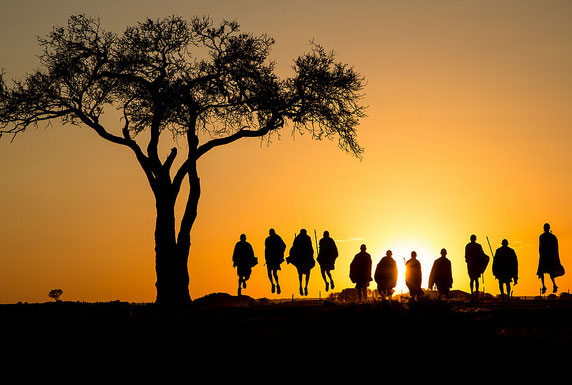
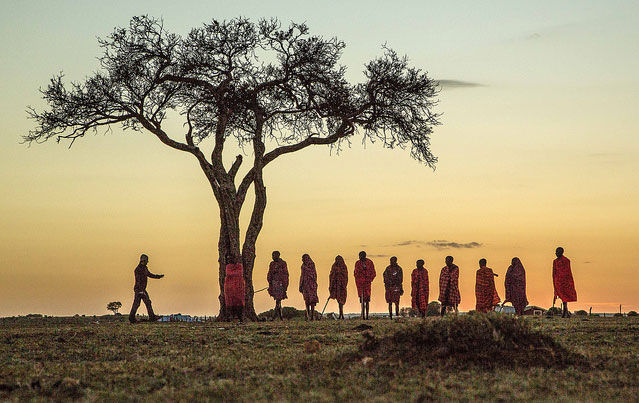
Travel to Africa
I never dreamed that I would travel to Africa – I thought it was too expensive, too complicated, and much too far.
But then I got an opportunity that I couldn’t pass up, and I decided, amidst trepidation, to go to Kenya.
I had all sorts of anxieties before the trip – fear of plane crashes, wild animal attacks, scorpion bites, and more.
Thankfully, none of those calamities actually occurred. I did have some unusual experiences, however.
Once, in the middle of one night, I awakened, sitting up terrorized in bed. A warm hand (or paw?) had grabbed my foot – not something you want to happen when sleeping alone in an unsecured tent inside of a game park in Kenya.
After lying motionless for what seemed like hours, I fell back asleep, hoping that the foot fetishist was no longer a threat.
Yet, when it happened again just a short while after, I dared to turn on the lamp and found to my supreme embarrassment (and relief) that the ‘hand’ was in fact a rubber hot water bottle put between the sheets without my knowledge.
As an American, I had never used one and let me tell you, they feel quite weird if you aren’t forewarned!
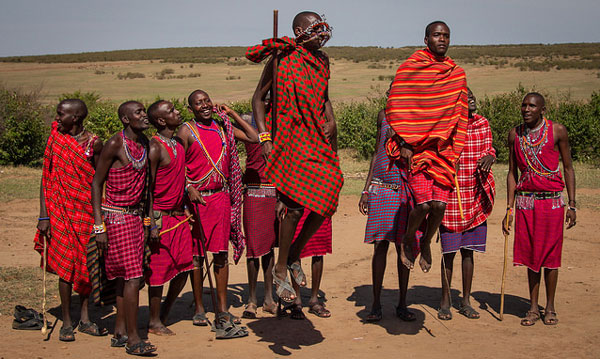
Visiting the Maasai Cattle
One of the most endearing episodes of my life happened while in Kenya. On a warm Sunday morning, somewhere deep out in the Maasai Mara savannah with a park ranger, we encountered a throng of Maasai cattle-herding boys from about 5 to 15.
They were all eager to touch my humidity-challenged hair, which they said was like a “lion’s mane.”
Some giggled, some shrieked a bit, but none were too shy to give it a go After all, when one lives in a dung hut surrounded by wilderness for hundreds of miles in every direction, it’s not every day one gets to touch a “mzungu”s’ hair.
That’s what I was in Kenya – a “mzungu,” which is Swahili for foreigner, or white person. Lest they had trouble identifying me as such (highly unlikely,) I wore a T-shirt with the word emblazoned on the front – something that got quite a few chuckles from the locals.
The Maasai Guide
A handsome Maasai guide, Oleshargegilololtoriroi (AKA Joseph,) was my escort on a nature walk.
He was decked out, as always, in his flashy traditional garb of red plaid wraparound blanket, no end of colorful beads and an exotic leather braided headgear that made him look positively royal.
He carefully translated for us and told me that the young boys were on a mission to collect branches for their teacher to use as whipping switches – something to keep on hand, apparently, whether needed or not.
When I told them that my own children didn’t have this treatment in their school, they looked astonished. Each politely shook my hand and as I walked off, I felt a thrill that these boys were now not only part of my memory and part of me, but that I was also a part of theirs’ and them.
Maybe I was the only “mzungu” they had ever met. Most probably, I was the only one whose hair they had touched!
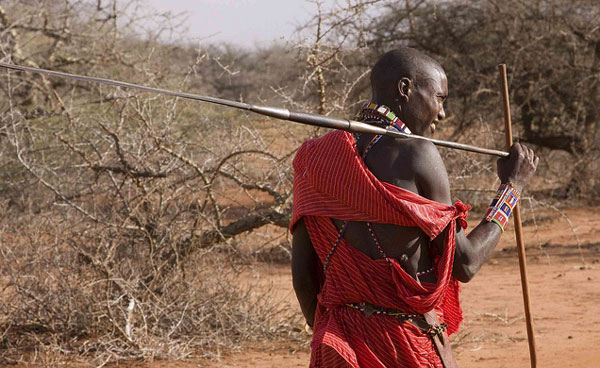
Amos, a park ranger dutifully equipped with a World War II-era rifle, accompanied us on the walk. After all, this is lion country – as well as elephant, cheetah, leopard, wart hog, etc.- country.
The Beautiful Countryside
While we traipsed the countryside, viewing herds of Thompson gazelles, Topi antelope, elephants and others, I asked the two men about their culture and they barraged me with questions about our culture.
The Maasai were intensely curious about such things as monogamy, divorce, Oprah (how on earth do they know about her?!) and WHY we don’t like to drink cows’ blood, or how we even exist without drinking blood.
I, on the other hand, interrogated them about polygamy and arranged marriage, how they DO like to drink cows’ blood, etc. and found myself truly wondering who had it right after all.
The Friendly People Around Us
Every now and then, we’d run into young boys herding cattle with their spears. They were amazingly friendly and brave enough to chat with me, even practicing their English one-to-tens that they had learned in their tiny schools.
Politely shaking my hand, they’d let me pet their cows and they’d then pet my hair.
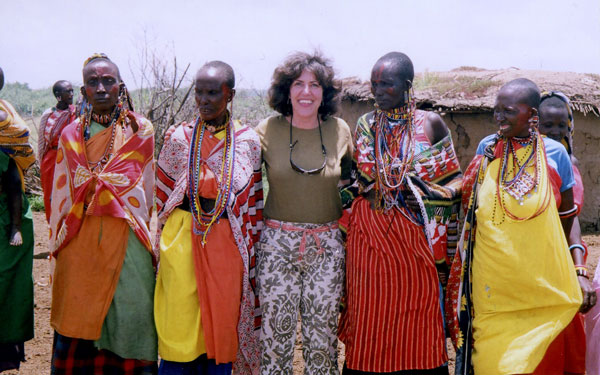
Despite the appalling poverty in Kenya that is all too apparent, I felt safe during the entire trip. Kenyans were quite delighted with my ‘uncommon’ nationality (Brits and Germans are the main tourism groups there) and embraced me with their genuine warmth and outgoing natures.
It was enchanting how even the tiniest Maasai children know to shake hands when meeting someone new, and how everyone introduces themselves on a first name basis – no pretensions.
I loved the Swahili greeting of “Jambo” which everyone uses instead of ‘hello,’ and the endearing “much welcome.”
Hakuna Matata
I was surprised when I heard “hakuna matata” and realized that the theme song from The Lion King, which my children had played a million times, really DOES mean ‘no worries, no problem.’
Africa Adventure Consultants, a Colorado-based firm specializing in custom safaris and other types of travel in south and east Africa, coordinated our trip.
I’m certainly not the only one who finds travel to Africa a bit daunting – so Kent Redding, the president of AAC, uses his expertise and extensive background knowledge gained from living and working for years in that region of Africa to guide others in designing their trips.
The region Redding specializes in is noted for hosting the Great Migration, the inconceivably huge event each June, when millions of wildebeests and zebras migrate across the Serengeti and Mara plains in thunderous herds.
The rest of the year, however, there is no shortage of animal sightings across the rolling plains and savannahs.
Safari
Kent planned our trip along with Heritage Hotels, a Kenya-based small chain offering three levels of properties throughout safari country and the Indian Ocean coastline.
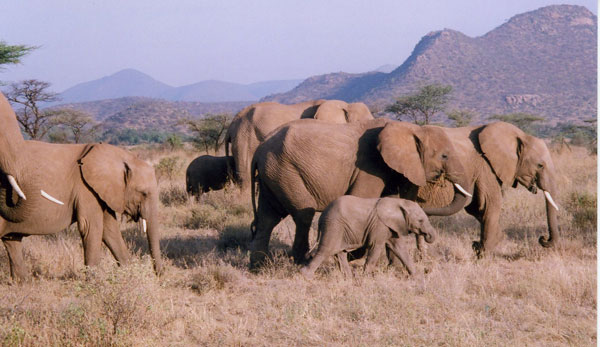
Like many African itineraries, our trip was designed as part game park safari and part beach resort. Our trip ended at the beach – but either way would work well.
Flying into Kenya’s capitol city of Nairobi, most opt, as we did, to spend one day there visiting the local Elephant Orphanage and the Rothschild Giraffe Sanctuary.
The next day, we were on a bush plane (DON’T forget your motion sickness meds if you even THINK that might be a problem – take it from ME.)
Off we were to Samburu Intrepids, the Heritage game park lodge. At Samburu, we slept in large constructed tents which were very comfortable, cozy and well-equipped, in good beds surrounded by romantic mosquito netting.
It was even more romantic since I never had one mosquito bite in or out of the tents during the whole trip.
The View from My Cabin
My cabin looked right onto the gently flowing river, in front of which mischievous, determined little black-faced monkeys scampered up and down trees and watched me intently, hoping to get inside of my tent.
The staff told me they’ve caught monkeys inside of the tents (when guests accidentally leave them unzipped) trying to apply lipstick and attempting to use cameras!
Travel in Kenya: African Safari
No trip to Kenya would be complete without safari time. Game-viewing jeep tours with skilled African safari guides are typically offered two or three times a day at the game parks, always at about 6:30 a.m. sometimes again at 10:30 and last at 3:30.
The rides are in incredibly sturdy 6-7-passenger Land Rovers or others of the type, and they get through terrain that is the kind I was sure we’d be stuck in – but I was wrong.
Rather like a bucking bronco ride at a wild west park, we’d set out in peaceful hunt of the so-called Samburu Special Five.
Grevy’s zebras, reticulated giraffes, Somali ostriches, long-necked gerenuk antelope and Beisa oryx along with elephants, lions, leopards and others.
It isn’t difficult – we spotted plenty on every ride, although some animals, such as zebras, eluded us throughout the entire trip.
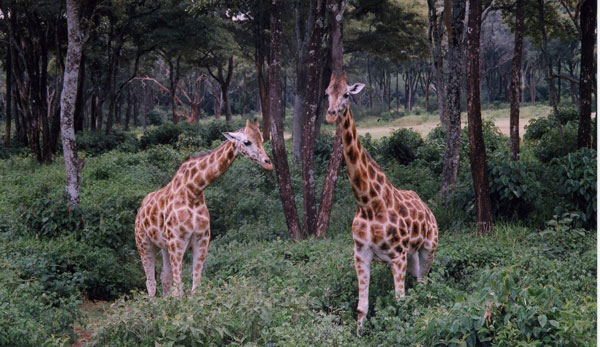
There’s nothing quite like seeing giraffes’ graceful forms far off in the distance – and knowing they are wild. One time, seeing about six species all together.
Ostriches, wart hogs, Thompson gazelles, Topi antelope, dik diks – it reminded me of the opening scene of The Lion King. It was something I’d certainly never seen at my local zoo.
As thrilling as seeing the wild animals are the cultures of eastern Africa. I was fascinated by the Maasai and Samburu peoples living in their ancient lifestyles of dung huts and herding cattle.
They dressed in what must be the most colorful and flashy costumes I’ve ever seen. No number of beaded necklaces and bracelets is too much – and somehow, it works!
Visiting A Village
The guides from the lodges arrange visits to a nearby village, and can usually accommodate a primary school visit as well.
The villagers have adapted to tourism while keeping their culture virtually intact (although you might see a wristwatch or cell phone peeking out of a pocket.)
They invite visitors to enter a hut and hear a short talk about their lifestyle, while the women outside lay out their handicrafts for sale. Everything is priced for bargaining – that’s the norm.
There are always a few villagers who speak enough English to translate for the rest, and usually, a dance or song will be performed to honor visitors as well.
I sometimes tired of the game drives, what with the pot holes and getting tossed about, so on one afternoon, I decided to just stay at the camp to sit by the river and see who or what might come by.
To my delight, I pulled over a deck chair and saw a large gray rock that looked too smooth and different from the others to be just a rock.
It was inside of a protected small eddy that looked quite like the whirling waters of a Jacuzzi. In fact, it was an enormous hippo – just a few yards away from me, and basically right beyond my own tent’s ‘back yard.’
I sat there for about three hours, watching it play ‘peek-a-boo’ (or so it seemed) just lifting its eyes and forehead out of the water every few moments, then once in a while giving me a good rear shot.
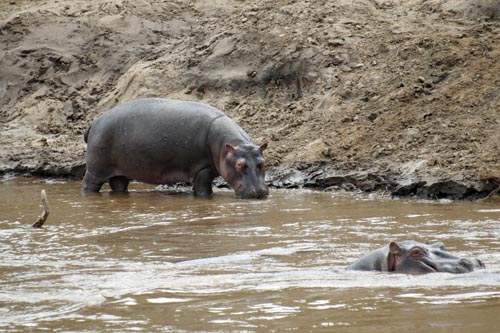
Finally, right before sundown, it lifted up its head and had two immense yawns, so big that its open mouth had virtually no angle to it.
It then lumbered slowly, sturdily up onto the rocks on the bank, had one bite of grass, and then apparently decided it enjoyed the Jacuzzi too much to leave.
Back it went and back I went to prepare for my dinner after what had to have been one of the most rewarding experiences I had while on my trip.
Enjoying the Dinner
At the lodges, in the evenings before dinner, safari guests can meet for a slide presentation and lesson about the local customs or wildlife, while enjoying cocktails and appetizers.
Dinner is served in the al fresco, but covered dining area with warm golden lighting and perhaps a bush baby or two peeking from the rafters overhead.
If desired, the lodges will prepare ‘bush dinners,’ beautiful, magical events in secluded areas under an incredibly thick canopy of stars. Most retire early to their tents to rest up for the early wakeup calls, which, by the way, are the nicest you’ll ever have.
A gentle voice outside the tent with a ‘good morning?’ then, upon unzipping your tent, there will be a tray waiting with a thermos of tea, coffee or cocoa and some warm cookies to tide you over until the post-game tour breakfast.
The meals at the game park lodges are surprisingly excellent – considering the remoteness of the lodges. Chefs prepare lavish breakfast and lunch buffets, while dinners are ordered from the menus.
Delicious Fruits and Salads
I was especially impressed with the quality of the fruit and salads – fresh and delicious, and with the extensive selection.
The fruit was even more succulent and varied at the beach resort – in fact, just as I was about to dig into the juicy mango on my plate one morning, a monkey leapt onto my table, grabbed the mango and sprang away in one fell swoop.
The employees were frantic but we tourists just laughed. After all, we DID come to Kenya to see animals, didn’t we?
I left Kenya with tears in my eyes for the warm, embracing Kenyans – Maasai, Samburu, and all of the others I had met. Hakuna matata to the mango-stealing monkey, and hakuna matata to me.
The schoolchildren with whom I sang “Itsy Bitsy Spider,” the Maasai nature guide who showed me dung beetles and a cape buffalo skull, my chambermaid.
She chatted with me about our children, the waitstaff who made my birthday dinner into a party, and of course, ‘my’ backyard hippo – ‘Asante sana’ to all of you – thank you.
If You Go:
Adventures in Africa (Africa Adventure Consultants).
[email protected]
https://adventuresinafrica.com/
The company specializes in these countries: Botswana, Kenya, Malawi, Uganda, Namibia, Rwanda, South Africa, Tanzania, Victoria Falls, Zimbabwe and Zambia. Their core values include the commitment to the preservation of a fragile ecosystem, the protection of exotic wildlife and the well-being and advancement of people in Africa.
Author bio: Irene Middleman Thomas is a Colorado-based writer for a variety of local, national and international publications and websites. She will never forget Joseph and the mango-stealing monkey. www.irenethomas.com
